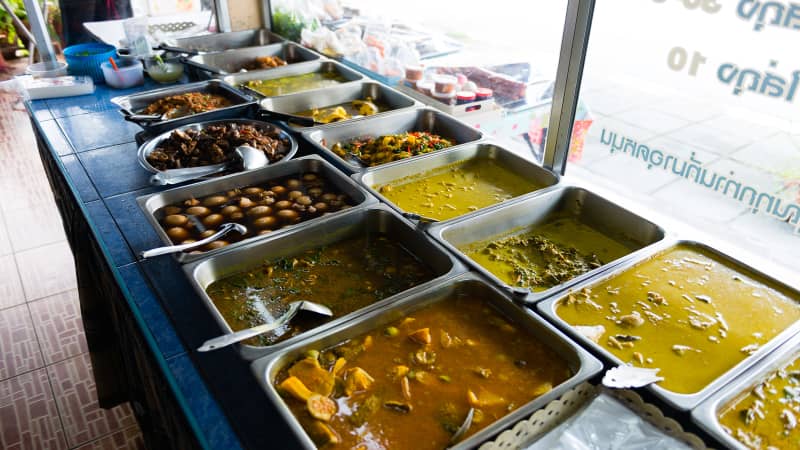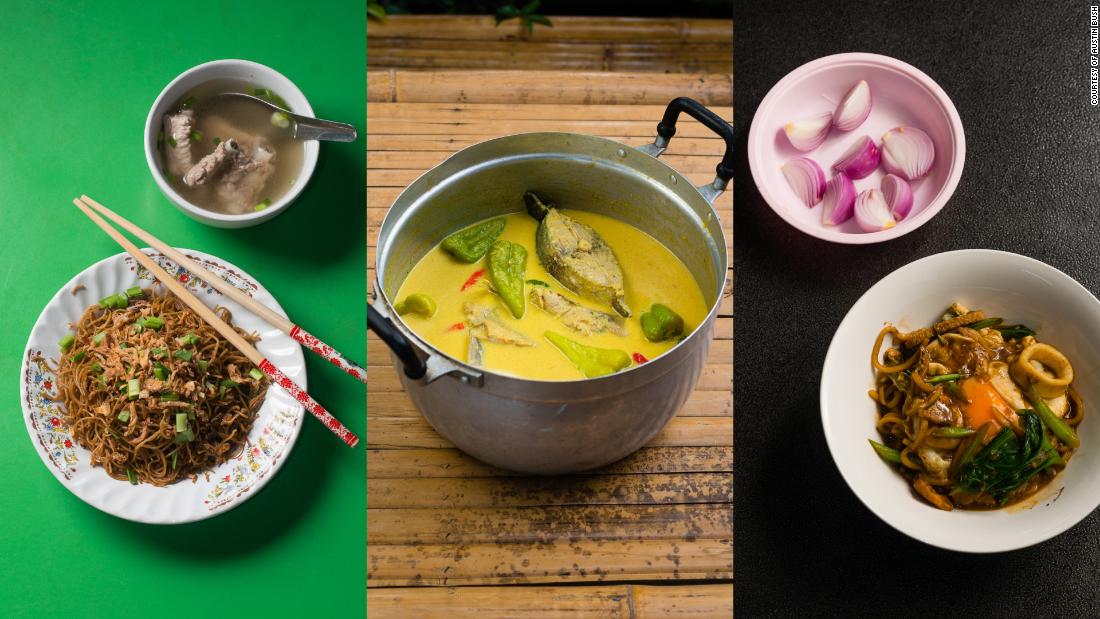(CNN) — The toughest reservation in Bangkok? It’s almost certainly a place called Sorn.
This is all the more astonishing given that the Michelin starred restaurant’s five-course tasting menu costs more than US$100 — this in a city where a tasty dinner can easily run less than $10 and a bowl of noodles can cost as little as $1.50.
But the majority of Bangkok diners tend to associate southern Thai food with one thing: heat.
It has a reputation for being spicy. And often, this reputation is justified: I recall eating a curry on Ko Samui that was so hot, it had my ears ringing.
But in nearly three years of research for my next book, a cookbook profiling the food of southern Thailand, I’ve learned that the region’s food is many things.
Yes, many southern Thai dishes are spicy, but their heat doesn’t only come from chilies; southern Thais also like the uniquely slow burn that comes from the addition of black pepper.
They can also be sweet. The south is home to some of the country’s most prized palm sugar — a dark, earthy sweetener that makes its way into both sweet and savory dishes.
Southern Thai food is often herbaceous and aromatic. It can be very salty and it can also be mild and rich.
Take the food of Phuket, for example. If you’ve visited the island, it’s likely you had a seafood buffet or perhaps a plate of fried rice at a beachside restaurant. But for real local food — the type of stuff you won’t find elsewhere in Thailand — you need to go inland, to landlocked Phuket Town.
There, you’ll find an entire repertoire of dishes that don’t match the general perception of southern Thai cuisine; dishes that go light on the chili and that have more links with China than Thailand.
“Our food isn’t spicy, that’s from the Chinese influence,” says Varerat Chaisin, a native of the island and for 35 years a teacher of culinary arts at a vocational college on Phuket.
This is evident in the island’s deliciously mild, savory dishes — mii hokkien, yellow wheat noodles stir-fried with pork, seafood and greens; mii hun, thin, round rice noodles fried with soy sauce and served with a peppery pork bone soup; oh tao, tiny oysters fried in lard with chunks of taro and egg — many of which were introduced or created by Hokkien Chinese laborers.
Blurring culinary lines
Indeed, outside influences have had a huge impact on the food of southern Thailand. This is especially the case in the country’s predominately Muslim provinces, including Pattani and Yala. There, dishes emphasize the mild, rich, sometimes sweet flavors favored just across the border in Malaysia.
“Thai Muslims love coconut and dried spices. We also love sweet flavors,” says Farida Klanarong, the owner of Barahom Barzaar, a restaurant in Pattani province.
At her restaurant, Farida showed me how to make a deliciously mild, turmeric-heavy curry of fish, and a salad of wild fern shoots served with a rich, peppery, savory, garlicky coconut milk-based dressing that reminded me of — no joke — ranch dressing, both dishes that were unlike anything I’d previously encountered in Thailand.
In some cases, the line between foreign and Thai cuisines has been completely blurred. In cities such as Phuket, Phang-Nga and Trang, foreign ingredients, dishes and cooking techniques became fused and blended with those from Thailand, resulting in an entirely new cuisine known as Baba or Peranakan.
“For Thais who love spicy food, they may find Perenakan food bland,” says Khanaporn Janjirdsak, a Peranakan herself and the owner of Trang Ko’e, a Peranakan restaurant in Trang province. “The flavors aren’t strong, we try to balance them.”
Bland isn’t the word I’d use to describe Khanaporn’s mother’s recipe for yam mii hun, a Peranakan-style salad of thin rice noodles in a dressing that gets its unique aroma from calamansi limes and a bit of funk from shrimp paste.
It’s also one of the most colorful dishes I encountered — this in a region of dishes resplendent in green, red, yellow and orange stemming from ingredients that range from turmeric to so-called stink beans.
Nakhon Si Thammarat: Setting the standard

Nakhon Si Thammarat’s curry stalls are legendary.
Courtesy of Austin Bush
To get to the heart of southern Thai cooking, the type that Bangkok people are currently obsessed with, arguably one needs to visit the city of Nakhon Si Thammarat.
The city’s cooks are legendary, having opened curry stalls across the region, in effect setting the standard for southern Thai cuisine.
It’s in this city that you’ll find dishes that are the staples of the repertoire, recognizable to people across Thailand: the fiery stir-fry of minced meat and curry paste known as khua kling; the tart, spicy fish soup known as kaeng som; rich coconut milk-based curries; fish, deep-fried and served under a hill of crispy deep-fried garlic and turmeric; and funky, spicy chili-based, Thai-style relishes.
“Dishes in Nakhon Si Thammarat are more intense, they have more flavor,” says Yupha Ninphaya, who along with her mother runs curry stall Paa Eed in the city.
Every day, the pair prepares around 20 different dishes, which are served from pots and trays in a display case. There’s no menu here. Instead, diners roll up and point to what looks good, perhaps a peppery curry countered by a mild, vegetable-based stir-fry; or maybe a fiery, tart bowl of soup and a side of sweet, rich braised pork belly; or a crispy, garlicky deep-fried fish paired with an herbaceous coconut milk curry.
Yes, there’s chili — lots of it — but in southern Thailand, it doesn’t take long to see that the real goal is balance.
